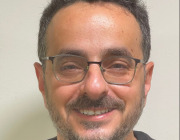Date Published:
may
Abstract:
Over the last decades, the disability movement has been advocating for a paradigmatic shift in how disability is perceived and managed: from a medical or individual perspective focusing on the person's body and mind to a social perspective emphasizing the context and barriers of disability. However, we still know little about the perceptions of helping professionals, particularly social workers who work closely with disabled people. Thus, the aim of the current study is to develop and validate a scale—Perceptions Toward Disability Scale (PTDS)—to measure how social workers view disability: as an individual or social category. This paper describes the three phases of the scale's construction. First, scale items were formulated and its content validity was examined. Next, a pilot of 30 social workers completed a questionnaire and an initial exploratory factor analysis was conducted. In the third and main phase, the final draft was completed in 2016 by 565 Israeli social work students to assess its psychometric properties. Both exploratory and confirmatory factorial validity and discriminant validity analyses were conducted. The results of a confirmatory factor analysis revealed two distinct factors: an individual perspective of disability comprised of eight items (α = 0.77) and a social perspective of disability comprised of ten (α = 0.66). Subsequent analyses supported the scale's discriminant validity as indicated by the lack of an association between the Attitude Toward Disabled Persons Scale (ATDP) and the social model subscale (r =.13, p =.19) and by the weak negative relation with the individual model subscale (r = −.25, p =.01). These findings show that the PTDS possesses promising construct validity and provide support for its utility. This easy-to-administer instrument offers several practical benefits and can serve as a framework for further empirical research regarding social work practice with disabled people.
Notes:
Funding Information: The study was supported by a grant from the Warburg Foundation. The authors would like to thank all the students, social workers and disability studies experts who gave their time to make this study possible. We also thank Maayan Livne, Bracha Erlich and Ortal Wasser for their excellent research assistance. Publisher Copyright: © 2018 John Wiley & Sons Ltd
Publisher's Version

